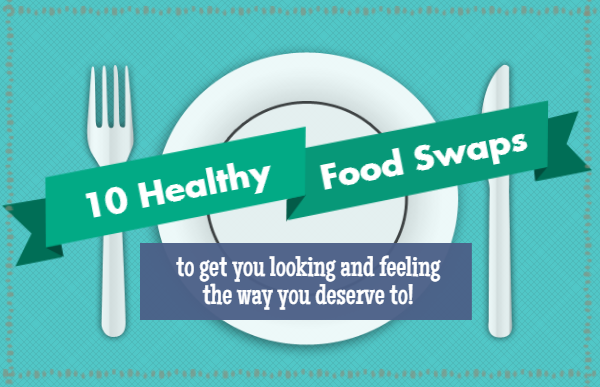when did we have to start eating defensively?
Eating is one of life’s greatest pleasures. It should be satisfying, enjoyable, and most of all, nourishing. The one thing it should never be is scary. But while food is meant to be health-giving, it is becoming increasingly difficult to navigate our way through ingredient lists that look more like the CliffsNotes of a chemistry course than a food label. As eaters, we used to look to previous generations to advise us on what to feed ourselves, but as we’ve slowly given up our culinary heritage, we have become reliant on others to make those decisions for us. We now live in a culture that has required us to start eating defensively.
Reading a list, checking it twice…
Anyone with food allergies understands the vigilance that is involved with eating outside of the home. But unless you have a motivating reason to closely examine everything you put in your mouth (or your child’s), we generally take our food system for granted and assume its relative safety. Its comforting to trust, and most of us feel a sense of security that the regulatory bodies in our country will shield us from consuming anything unsafe. But as we become increasingly disconnected from our food production, we also become complacent consumers who don’t ask questions about what we’re eating.
What are you putting in my food?
Recently, NC food blogger Vani Hari did ask some questions, and her grassroots campaign brought media attention to the fast food chain Subway, involving a suspicious ingredient found in most of their breads. The ingredient in question is called Azodicarbonamide, which is used as a bleaching agent and dough conditioner (and allows for faster and cheaper bread production), and also happens to be found in yoga mats, shoe soles, and other rubbery materials. It has been shown to cause asthmatic and other allergic reactions, resulting in a banning of the additive in the EU and Australia.
While Subway took the fall for the scare among consumers, the reality is that azodicarbonamide is found in a large majority of packaged and processed breads sold in America. It’s hidden in bread products from Wendy’s, Starbucks, and McDonald’s (just to name a few) and in bagged breads lining most grocery store shelves.
Should we really blame Subway?
Even though there was an outrage that the “healthy” chain would include this ingredient in its products, it would be frivolous to place the blame on Subway alone, or any other food manufacturer for that matter. Despite the way individual chains may market themselves, the food industry is a business, and turning a profit is what it is after. If including controversial ingredients that have been approved by our Food and Drug Administration accelerates that end goal, what is the motivation to leave them out? Azodicarbonamide’s use has been approved by the FDA, after all, who considers it to be “generally recognized as safe”, as long as the amount included is small enough (so its not that safe, apparently).
It is upsetting to discover that an ingredient banned in other countries is permitted for use in our own, but what’s more alarming is that its not just Azodicarbonamide, but dozens of chemicals, additives, and coloring agents that are considered “safe” by US standards, while being regarded as dangerous enough to ban from food production in other countries.
The short list includes:
- various chemical coloring agents
- Olestra– results in dramatic depletion of vitamins and minerals. Banned in UK and Canada
- Brominated Vegetable Oil (BVO)– interferes with thyroid function, increases risk of autoimmune disease, cancer, birth defects, growth problems… Banned in more than 100 countries
- Brominated Flour– made with same chemical found in BVO (approved by the FDA, although they “encourage” bakers to voluntarily avoid it)
- BHA and BHT– potential carcinogens
- Synthetic hormones rBGH and rBST– linked to breast, colon, and prostate cancers
- Arsenic (!)- potential carcinogen
- DPA– breaks down into chemicals which are carcinogenic
Even processed food is healthier when eaten outside of the US. Multi-national food corporations will actually reformulate their products for other countries that do not allow the inclusion of certain ingredients. Want a coke made without high fructose corn syrup? It’ll have to come from somewhere outside the US. Kraft macaroni and cheese without artificial coloring? You can find it in Europe, but not here at home. This should raise the obvious question; if it’s possible for a product to be made without these controversial ingredients, why isn’t it? The answer, again, lies in the bottom line. Food additives are used to increase profitability: to speed up production, extend a product’s shelf life, and ensure that the flavor, texture, and color will keep you coming back for more. A company would do well to offer its products in a country whose standards are set below the rest of the market.
We rely on the FDA to set the standards for our food safety, but when they slack on their job, it is important as consumers to be our own advocates. The term “food” has been applied too loosely in our current dietary landscape, and the criteria that classifies something as “food” continues to expand. When our nation’s regulations fall short of so many other industrialized countries, we are forced to be defensive eaters as a result. Regardless of your level of patriotism, its easy to see that our team isn’t winning in the match of food guidelines.





It is really scary. I don’t understand how the people who make this “food” can sleep at night.
I don’t understand either, but I do know that none of them eat this stuff.